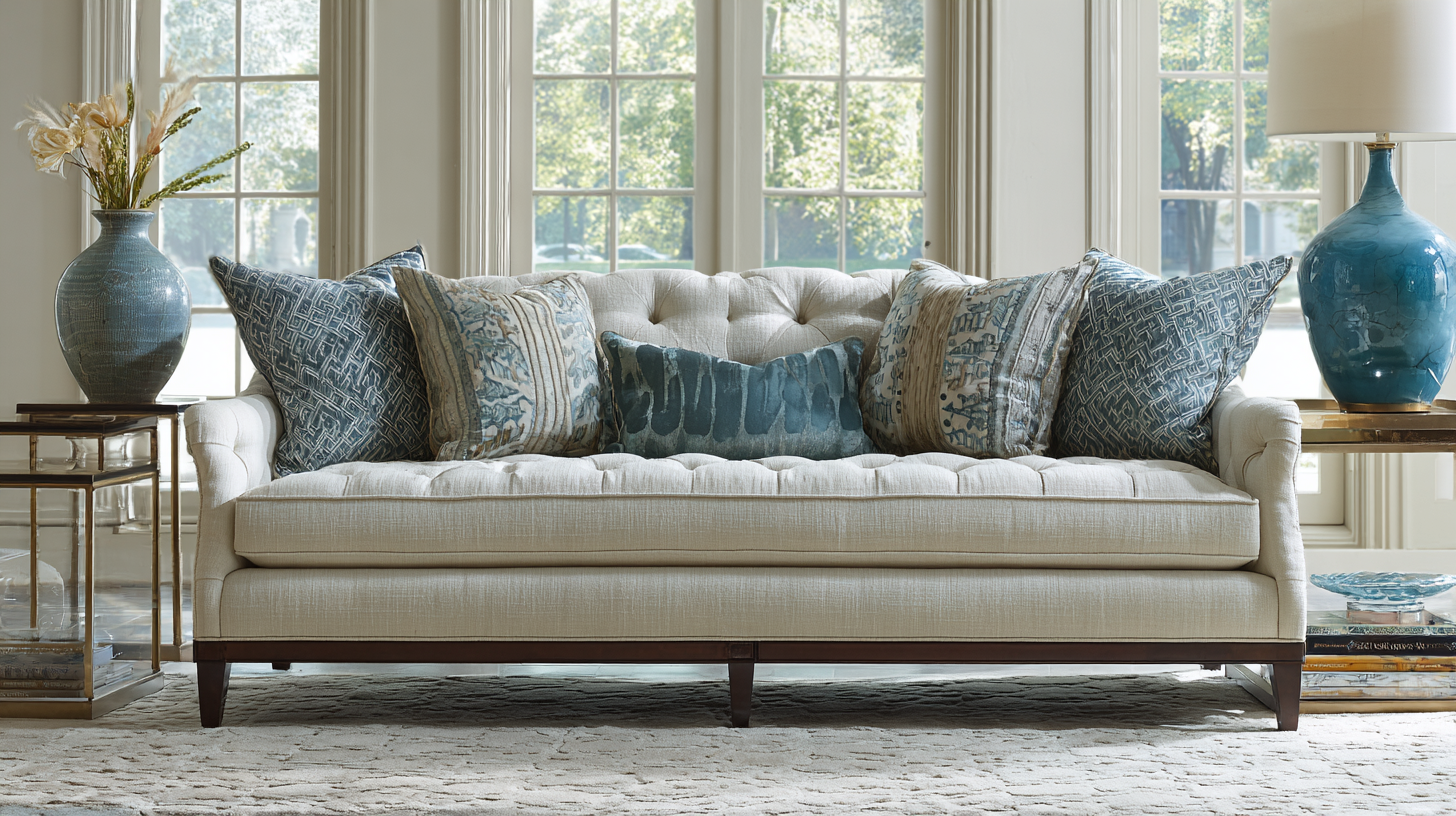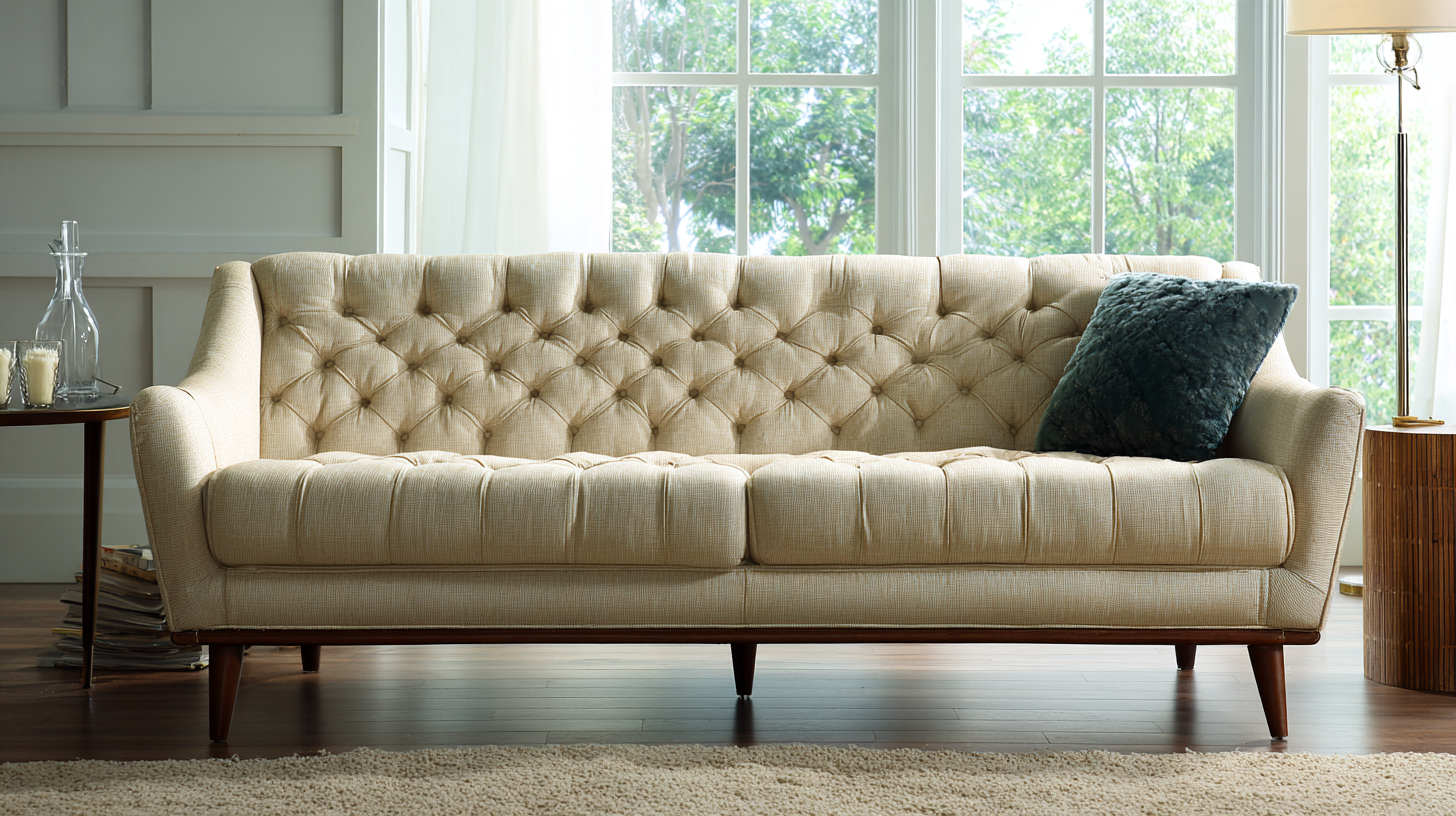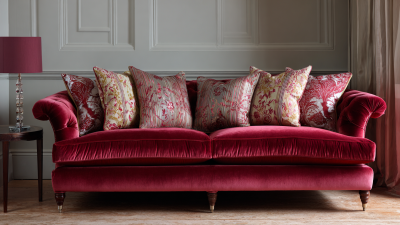Transforming your living space requires thoughtful consideration, especially when it comes to selecting the right sofa upholstery. Recent industry reports indicate that upholstery choices significantly influence not just the aesthetic value of a home but also its overall comfort and durability. A study by the American Home Furnishings Alliance revealed that 60% of consumers prioritize fabric quality when purchasing sofas, emphasizing the importance of choosing the right materials. Additionally, trends indicate a rising interest in sustainable fabrics, with the Global Upholstery Market expected to witness a CAGR of 4.5% from 2021 to 2028, highlighting a shift towards eco-friendly choices. Understanding the various types of sofa upholstery available—ranging from synthetic fibers to natural materials—can empower homeowners to align their personal style with practical needs, ensuring both beauty and resilience in their living environments.

Choosing the right upholstery for your sofa is essential, especially when creating a harmonious living space. Before you make any decisions, assess your living area carefully. Consider the size of your room and the furniture layout; modular sofas are a fantastic option for maximizing space while providing flexibility. In fact, a recent study found that modular designs are among the most popular choices for urban living, accommodating various layouts and preferences.
Tips: When choosing upholstery, pay attention to durability, especially if you have kids or pets. Look for fabrics that are easy to clean and maintain; materials with stain resistance can save you maintenance time in the long run. Additionally, consider the color scheme of your living space. Neutral tones are versatile and can easily complement different decor styles, whereas bold colors can add character and serve as a statement piece.
Remember to balance comfort with aesthetics. A beautifully upholstered sofa should not only enhance your space but also provide the comfort needed for relaxation. After testing numerous options, it’s clear that the best sofas combine quality materials with thoughtful design, ensuring they meet both your style and functional needs.
Identifying your personal style is crucial when choosing the right sofa upholstery for your living space. Start by reflecting on the overall aesthetic of your home. Are you drawn to modern minimalism, rustic charm, or perhaps a bohemian vibe? Understanding your preferences will help you narrow down fabric choices that not only match your decor but also resonate with your personality.
Tips: Look for inspiration in design magazines or platforms like Pinterest. Create a mood board by collecting images of interiors and fabrics that speak to you. This visual representation will solidify your preferences and provide a clear direction when shopping for upholstery.
Once you have a clear understanding of your style, consider the functionality you need from your sofa. If you have pets or young children, you might gravitate towards durable fabrics like microfiber or leather that are easier to clean. For a more luxurious look, materials like velvet or linen can add sophistication, but they may require a bit more upkeep.
Tips: Test out different upholstery samples at home to see how they look in various lighting. This practical step can help you visualize how the fabric will fit into your existing decor and lifestyle.
 Choosing the right fabric for your sofa upholstery is essential for achieving both comfort and durability. When selecting a fabric, consider the intended use of the sofa. If you have children or pets, opt for durable materials like microfiber or synthetic fabrics that can withstand wear and tear while being easy to clean. These fabrics are often designed to resist stains and fading, ensuring your sofa remains looking fresh for years.
Choosing the right fabric for your sofa upholstery is essential for achieving both comfort and durability. When selecting a fabric, consider the intended use of the sofa. If you have children or pets, opt for durable materials like microfiber or synthetic fabrics that can withstand wear and tear while being easy to clean. These fabrics are often designed to resist stains and fading, ensuring your sofa remains looking fresh for years.
For those seeking a more luxurious feel, natural fibers like cotton, wool, or linen can provide unparalleled comfort. However, these materials often require more maintenance and may not be as resistant to damage. It's essential to consider the lifestyle of your household when choosing the upholstery. Additionally, pay attention to the fabric's weave; tighter weaves typically indicate better durability. Ultimately, finding the right balance between aesthetic appeal and practical functionality will enhance both the look and resilience of your living space.
When it comes to creating a cohesive look in your living space, mixing and matching upholstery styles can be both fun and rewarding. The key is to maintain a sense of harmony while allowing individual pieces to shine. Start by selecting a color palette that complements your overall decor. Neutral tones can provide a solid foundation, while bolder colors can be incorporated through accent pieces.
**Tips:** Choose a few dominant colors to carry throughout your fabrics. For example, if you have a navy sofa, consider pairing it with pillows in complementary colors like mustard yellow or soft grey for a balanced look. Mixing textures is just as important; combine velvet with linen or leather with cotton to add depth and interest.
Another approach is to use patterns to your advantage. Stripes, florals, and geometrics can all coexist beautifully if they share a common color scheme. Be mindful of the scale of the patterns; large prints can anchor the design, while smaller patterns can provide subtle contrast.
**Tips:** Aim for a maximum of three different patterns to avoid overwhelming the space. Additionally, grounding your selection with a solid color—either in the sofa or the surrounding decor—can tie the entire room together, ensuring a stylish yet cohesive aesthetic.
When it comes to maintaining the upholstery of your sofa, understanding the proper care techniques is essential, especially in homes with pets. Regular vacuuming is crucial; it helps to remove pet hair and dander that can accumulate over time. For deep cleaning, it's important to consult the care label of your upholstery, as different materials require different cleaning methods. Spot cleaning can be effective for minor stains, while professional cleaning may be necessary for more stubborn marks.
Additionally, the frequency of cleaning should align with your lifestyle. In pet-friendly homes, it’s recommended to clean your sofa more often to prevent it from becoming a fur magnet. You should also be aware of the unique challenges posed by seasonal changes, such as increased humidity during monsoon season, which can affect your upholstery. Implementing protective measures, like using a fabric protector or covering your sofa during particularly wet periods, can help maintain the look and longevity of your upholstery, ensuring your living space remains comfortable and stylish.







